RDCBS Article on Caiques
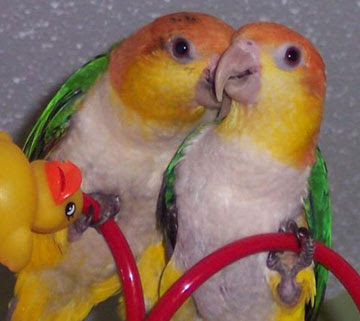 Photo from caiquesarepeopletoo.homestead.com (Trouper and Ripley)
Photo from caiquesarepeopletoo.homestead.com (Trouper and Ripley)
Caiques
By Rodney Money
trueloveaviary@gmail.com
Tamara: “Are you sure we are going the right way?”
Rodney: “Yes, I actually looked up the directions this time, plus, I MapQuested it.”
Tamara: “Hey! Is that it?”
Rodney: “Well, telling by the parrots on the sign that says “Birdie Boutique” in front of the house, I would say so.”
Tamara: “Smart butt.”
Rodney: “Yeah, I know. (LOL.)”
This was the conversation Tamara and I had on our very first adventure to the Birdie Boutique in Durham, NC. We were engaged, broke, and without jobs. I was doing my student teaching for music at Apex High School, and because I knew birds would be in our life after marriage, I was looking for the perfect opportunity to immerse Tamara into the world of bird ownership. The moment we walked across the threshold, the sights and sounds of continents from all around the world resounded in our ears. Cockatoos, cockatiels, and budgies originally from Australia, African greys and Lovebirds with their roots in Africa, and from the New World: macaws, conures, amazons, and a very outgoing Maximilian’s Pionus that thought I was her Daddy. I can still feel those sharp, baby claws on my hand refusing to let go to this day.
We were excited to see that the Birdie Boutique had an open play area that allowed guests to play and help in the socialization of their birds. On the playground, our eyes caught the flashes and hues of emerald greens, tangerine oranges blended with shimmering yellows, and white as the pure, driven snow constantly in motion. As we got closer we saw that it was not just one parrot, but actually two very playful, acrobatic clowns working as one as they manipulated a toy made of wood and leather. We placed our hands near them not meaning to interrupt their play, but as soon as they saw us a new game has just begun; and Tamara and I were the main attraction.
“What kind of birds are these?” Tamara asked.
“Caiques,” I said as Tamara still looked puzzled.
“Pronounce that again, ‘Sweets,’” asked Tamara once again.
“(Ky-EEK’s) my ‘Love,’” I explained.
“Very cool, and so sweet and playful,” she said as she was already plotting on how to take them home.
In disappointment, due to our current status, I explained to her, “Right birds, wrong timing.”
“One day we will have birdies,” I thought, “one day soon.”
Every time I think of caiques I think of my very first meeting and lecture at the Raleigh-Durham Cage Bird Society. With pen and paper in hand, I was trying to digest every word concerning the topic of Nutrition for Our Birds, but in that instant a caique decided to initiate me into the club. As I took notes in my journal, he was wondering why the human got to play with all the cool toys. So he jumped on my lap, grabbed the leather binding holding together all my papers, and proceeded to dismember them. While I willingly gave up my journal to my new friend, more like to his beak, I signaled to his owner that it was completely all right. I was deeply honored that he decided to spend his time with me destroying my personal belongings. Because the caique welcomed me that day, I have been back to the meetings ever since.
Because of their playful, inquisitive, and “always on the go” attitudes, caiques have been called the closest thing to New World Lories. These little, animated clowns are also the parrot version of the hopping kangaroo; often preferring hopping and climbing over flying. They develop extremely strong feet and can be especially obsessed with foot toys. Although their diet consists more of a parrot diet, their high energy levels can rival that of a lory or lorikeet. Just like a young puppy, a caique loves to wrestle and roll a round on their back with their toys, owners, and even other birds. This rough-and-tumble play often surprises people when they catch their caiques wrestling on the bottom of their cages just like two Jack Russell Terriers. Watching them play can be more entertaining than going to the movies.
Caiques that are kept in pairs often act like siblings. If there is a dispute over a toy, treat, or a favorite perch, they will normally make-up and are back being friends in no time. In fact, caiques are known to remain tame even if they have a cage mate as long as there is daily playtime and proper socialization from their owners. Even with all this energy, they share a characteristic often found in the play of Lovebirds. They play hard, but eventually they crash, falling asleep like little babies. Owners have found this to be the perfect time for cuddles, snuggles, and the ever popular head rub. Caiques have even been known to sleep on their backs scaring some owners half to death only to realize that their baby was just acting silly.
These South American little wind-up toys are considered to be a medium sized parrot with a length of 9 inches and weighing somewhere between 170 to 190 grams. They are good as a single pet, but more entertaining in pairs, and do quite well living in apartments. However, some individual birds can have a harsh shrill resembling a whistle. The two main species most commonly found in captivity are the White-bellied Pionites leucogaster and the Black-headed caique Pionites melanocephala. The White-bellied caique we see mostly in the USA is the Yellow-thighed caique Pionites leucogaster xanthomeria. This subspecies has obviously yellow thighs in compared to the nominate race that has green thighs. The Yellow-thighed caique is often referred to as a White-bellied caique. The White-bellied caique is reported to be a bit calmer than the Black-headed caique and a little less high-strung, but calmer and less high-strung is a relative term when taking about the exuberant personality of the caique. With good care, a caique can live more than 20 years in captivity.
Caiques can become stubborn and may get out of control if they get too excited. Many of a parrot enthusiast has reported that the worst bite that they have ever received came not from a macaw or a cockatoo, but from a caique. These mischievous rascals tend not to be shy around strangers, especially if they are seduced by toys or treats, but people need to always stay a step ahead of these intelligent birds. A caique’s temperament has been compared to that of a Scarlet Macaw. Some caiques have been known to be very sweet when picked up, but bite fiercely out of deviance when being put down. Also, caution should be used when introducing a caique to new clothing, hair style, or flashy jewelry. The same bird who seems fearless and could take on the world one second, could suddenly exhibit extreme fear over an inanimate object. Caiques tend to be gregarious amongst their own kind, but can be aggressive when introduced to lesser dominating species. However, I know of at least one household that is not run by the caique, but by a Pacific parrotlet.
Caiques have healthy appetites and can go through a bowl of food in minutes. So an owner needs to make sure that their caique is not losing weight due to not enough food in comparison to their high level of activity. Most caiques love water and are prone to frequent baths even after just receiving a bath. Like conures, caiques benefit from having a tub in which they can bathe, and some even relish “leaf bathing” just like budgies. For one caique a cage measuring 23” wide by 32” long by 64” in height is the absolute minimum with the bar spacing of 5/8” to 3/4”. Larger is always better, and playgrounds outside the cage are a necessity. With a playground, toys, and foraging opportunities, caiques can be very self-entertaining avoiding driving their owners crazy with constant, demanding attention. Caiques are always on the move and tend to use their owners like a moving playground instead of a perch.
Because of their high intelligence, trick training is a great way to keep the mind of a caique busy. Plus, it is easy to entice them because of their love of treats. Some of the most extreme tricks are inspired by play. One example is when owners spin their caiques round and round on a string or piece of leather while they’re just holding on by their feet. This is truly a hilarious sight especially when you hear actual laughter coming from the bird. Black-headed caique Elvis, the mascot of the Birdie Boutique and the coolest caique of all, loves performing this signature trick in front of a live audience every chance he gets. Other favorite tricks of caiques include: playing dead,
shooting basketball through a hoop, retrieving objects, any trick that highlights their love of hopping either up and down or from one place to another, and mimicking different words or sounds. Even though caiques are not known for their talking ability, some can learn a few words. Caiques are better imitating sounds of objects found within the home. Like African greys, owners have to make sure that their caiques don’t pick up annoying habits like imitating an alarm clock or the beeping of a smoke detector.
Even though caiques are high energy birds, they tend to do very well in calm and peaceful households. They act as though they are feathered sponges saturated by the peace that surrounds them. With their white, little bellies and their bright shining, often devious and cunning eyes, a caique will always stand out in a flock of other birds. And when onlookers observe people wearing sweaters ornamented with holes and tears, these patient and forgiving owners will always proclaim when asked the question of ownership, “Yes, I have a caique.”



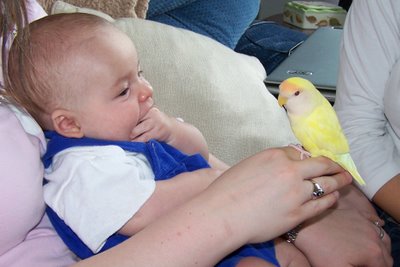



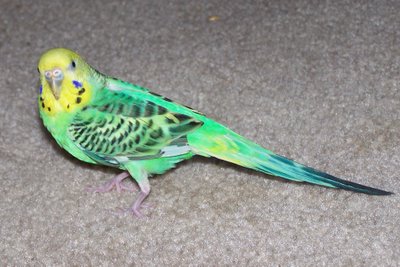


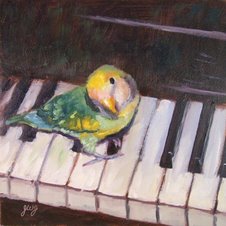
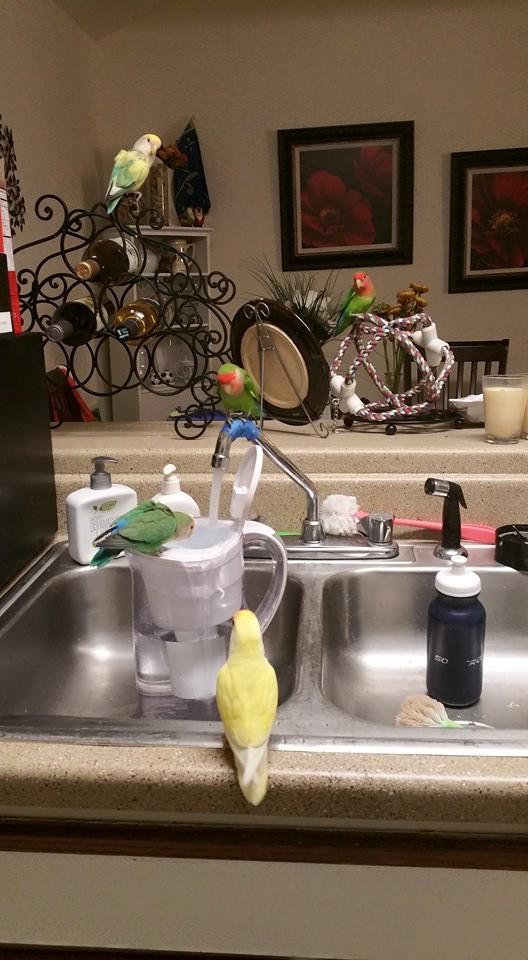














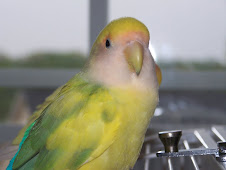

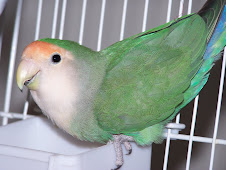



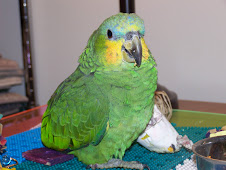
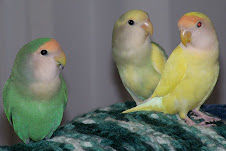


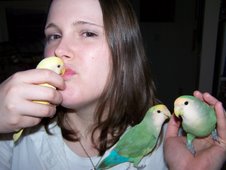
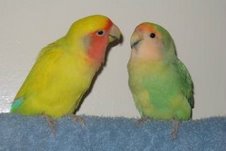
.jpg)
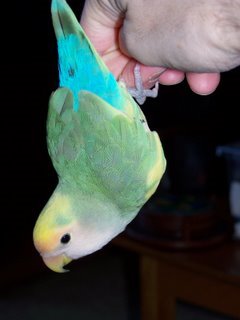
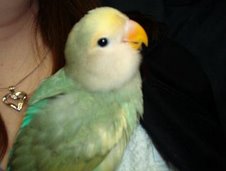
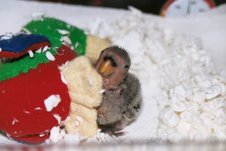
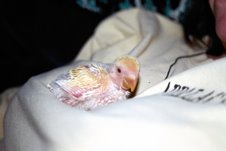




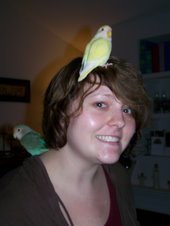




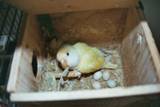
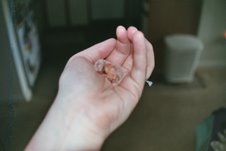

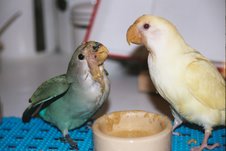
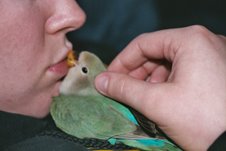
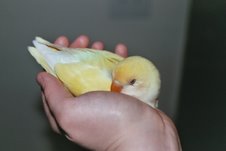
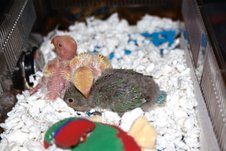
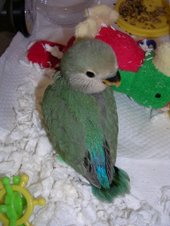
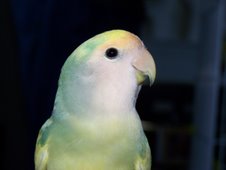

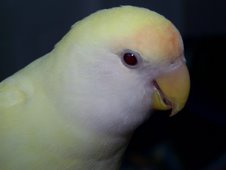
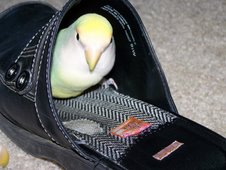
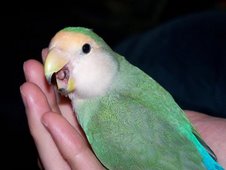
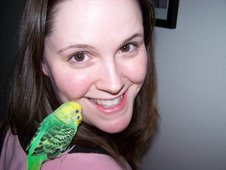


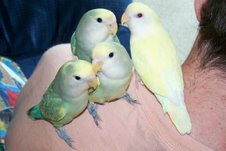




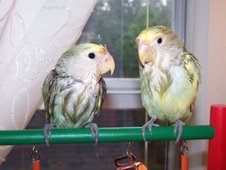



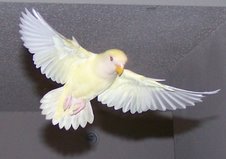

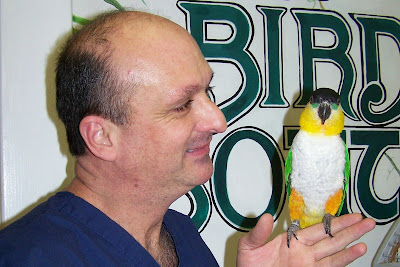







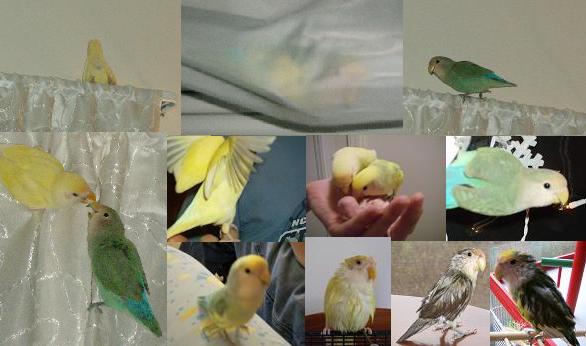
No comments:
Post a Comment